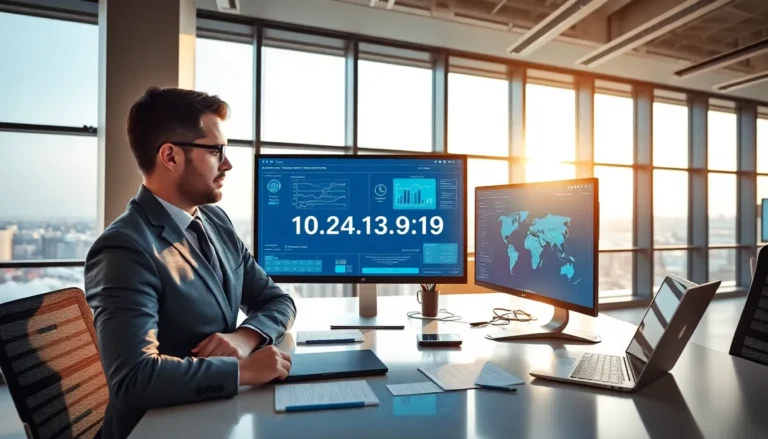Ever felt like you were trying to decipher an ancient language? Welcome to the world of IP addresses. While they might look like a random string of numbers to the untrained eye, they hold rich stories about the devices connected to our networks. Today, we jump into the enigmatic 10.24.1.39.113, peeling back the layers to reveal what it truly means. Don’t worry, none of this is boring tech jargon, it’s all about making your networks smarter and more secure. So grab your coffee, and let’s unravel this digital mystery.
Table of Contents
ToggleUnderstanding IP Addresses

What Is an IP Address?
An Internet Protocol (IP) address serves as the numerical label assigned to each device connected to a computer network. It functions like a home address, but for your devices. Just like you need your address to receive mail, devices need IP addresses to communicate over the Internet.
Types of IP Addresses
IP addresses come in two primary flavors: IPv4 and IPv6. IPv4 addresses, like 10.24.1.39.113, consist of four sets of numbers ranging from 0 to 255. These are most commonly used but are becoming increasingly scarce. On the other hand, IPv6 addresses include a mix of numbers and letters and can accommodate a vast number of devices. As the world becomes more interconnected, IPv6 is slowly taking over.
How IP Addresses Work
These addresses help devices in finding and communicating with one another over the Internet. Each time you send a request, for example, when you access a website, your IP address tells the network where to send the information. It’s vital for maintaining smooth communication between different devices, ensuring data reaches its intended destination.
Decoding 10.24.1.39.113
Identifying the IP Type
When looking at 10.24.1.39.113, it’s crucial to identify its type. In this case, it’s a private IPv4 address. Private addresses are used in local networks and aren’t visible to the public Internet, meaning they’re perfect for internal communication without exposing devices to potential external threats.
Geolocation and ISP Information
While geolocation on private IPs may seem tricky, knowing a device’s location or its Internet Service Provider (ISP) can enhance network management. 10.24.1.39.113 likely connects to various devices on a local network, potentially managed by an ISP that provides internal networking capabilities, ensuring seamless communication without breaking privacy.
Network Configuration Implications
How to Use 10.24.1.39.113
This IP address can help many aspects of local network configuration. For instance, routers often assign IPs within a range to devices. Proper using such an address can help with network segmentation and monitoring more efficient network traffic.
Accessing Devices on the Network
To access devices using this IP, one might employ the appropriate network tools or interface efficiently. Devices typically use web-based applications for accessibility, providing a friendly user interface to administer settings, check device status, or troubleshoot when necessary.
Troubleshooting Network Issues
Common Problems and Solutions
Even the best networks may face hiccups. Common issues could involve conflict between IP addresses if multiple devices try to use the same one. Alternatively, a device might become unresponsive due to a connectivity issue. To troubleshoot, one can easily flush DNS or release and renew an IP address, providing quick fixes to typical problems.
Tools for Diagnosis and Resolution
Useful Software and Command-Line Tools
Equipping oneself with the right tools is fundamental. Software like Wireshark or Angry IP Scanner can aid in identifying network issues effectively. On the command line, tools like ping, tracert, and nslookup assist in diagnosing connectivity and route-related problems. Using these tools enhances visibility and efficiency within network management.
Monitoring and Management Tools
Best Practices for Network Management
Implementing good monitoring practices can lead to improved network performance. Utilities like SolarWinds or PRTG Network Monitor provide insights into network performance, allowing for early detection of potential issues. Regularly updating firmware and maintaining patches can fortify security and ensure optimal operations.
Staying Secure and Efficient
Maintaining security in a network involving an IP address like 10.24.1.39.113 is crucial. Employing network segregation, using strong passwords, and implementing firewalls can significantly enhance security. Staying vigilant about network activity helps identify potential breaches before they escalate.





